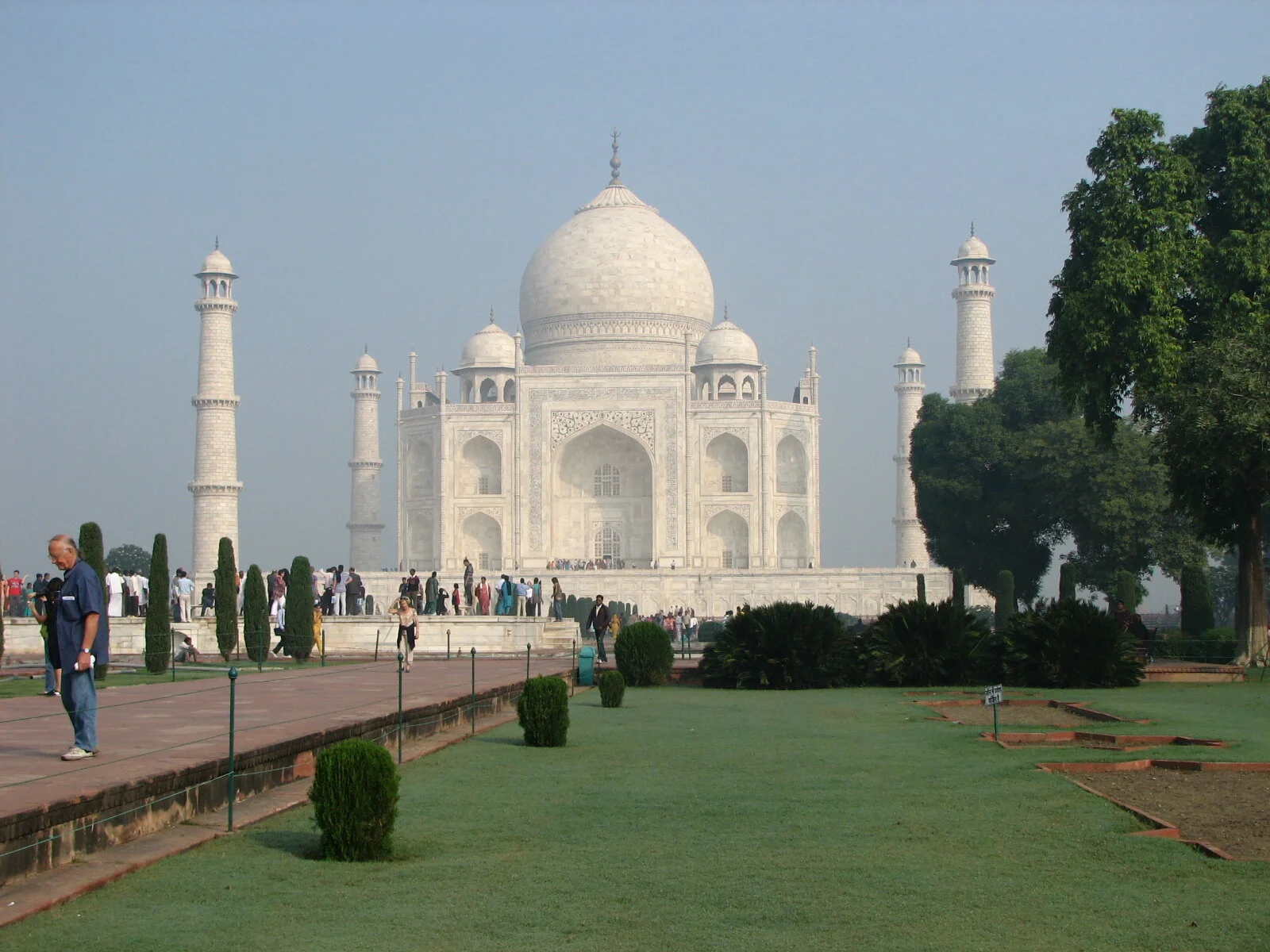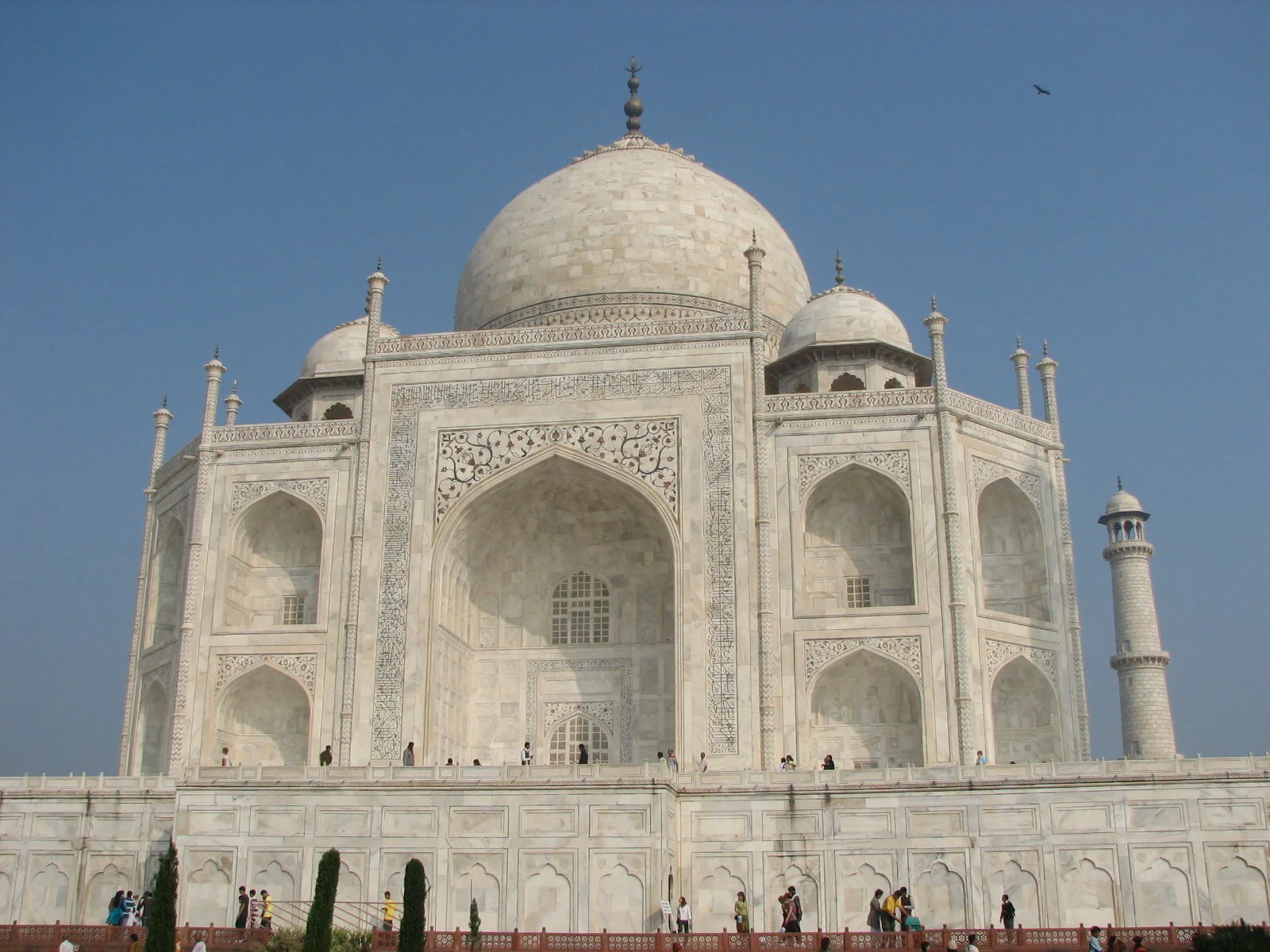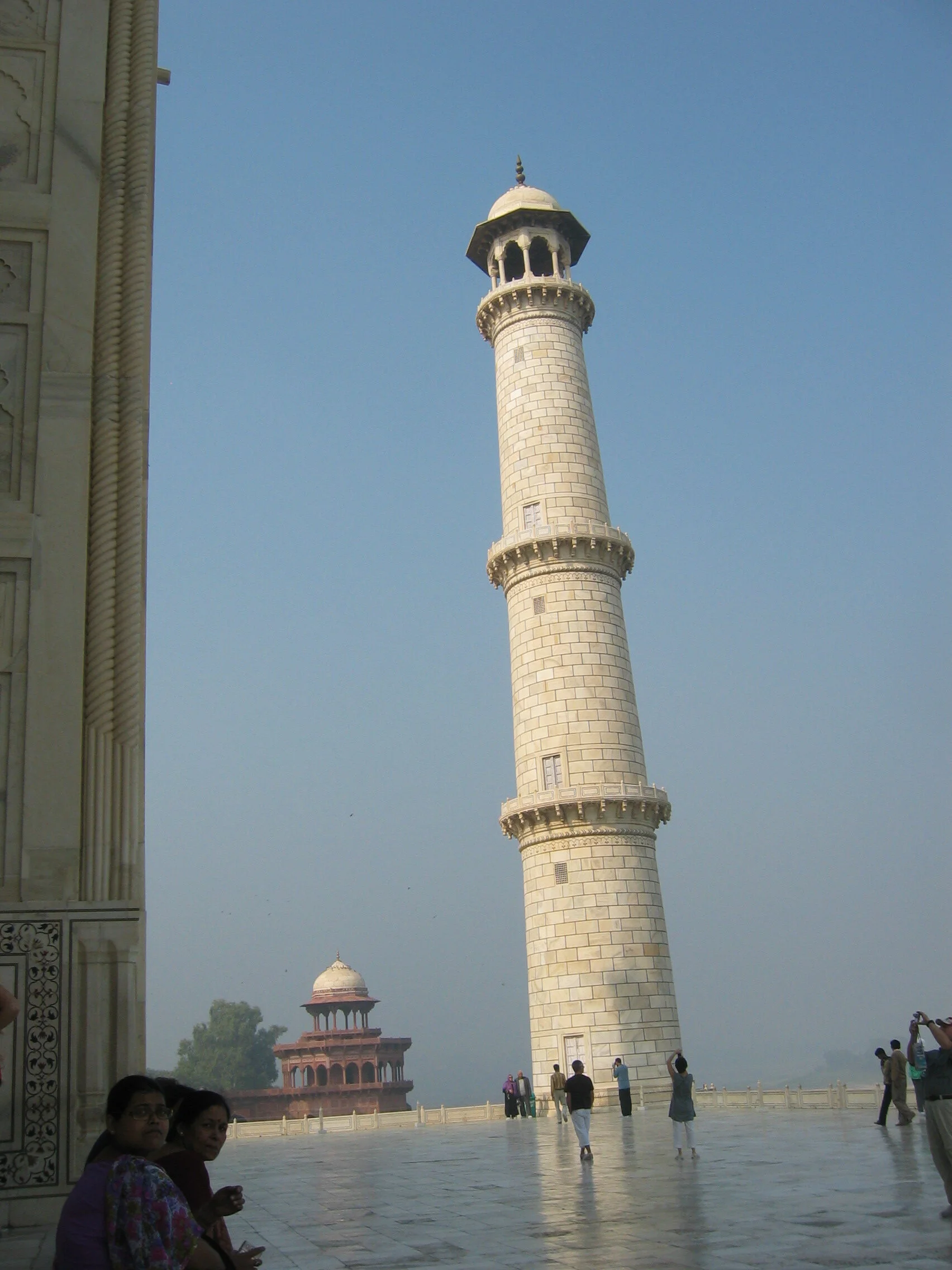Taj Mahal
The Taj Mahal was certainly one of the highlights of India. It was built by the Muslim or Mughal emperor, Shah Jahan. He built it for his wife and it was described as a tribute to their love. Shah Jahan built it for his third wife after she died during the birth of their 14th child. Construction started in 1632 and took over twenty years to complete. The whole place is some 3230 square feet with many outbuildings, gardens, reflection pools, flowerbeds, walkways, and trees. The tomb is spectacular but there’s much more to it than just the tomb.
To put the Taj Mahal in perspective size wise, I’ll give some measurements. The raised platform that the tomb sits on is 186 feet square. The top of the main marble dome is 213 feet high. The four minarets are 186.5 feet high. It is really a big structure and as we got closer, it seemed to grow in size.
We were supposed to get up at 5:45 in the morning and be here before sunrise. I was so sick, I couldn’t get out of bed at 5:45. Fortunately for me, Agra had socked-in fog on this morning. We didn’t meet to go to the Taj until 8:30. I rolled out of bed at 8:20 and was the last one to climb into our bus. I was very ill but still enjoyed the visit. The day was still foggy and hazy when we arrived, so these photos were not taken under ideal conditions. I took most of my photos from a sitting position. The good news was that it was not very crowded compared to the prior evening when we could see the Taj from across the Yamuna River.
The Taj Mahal also got more interesting as we got closer to it. I want to show more than just the typical photos. In the next photo, you can see some of the tremendous amount of detail work on the building.
The next photo is even closer to the wall. You can see some of the sculpted bas relief work chiseled into the marble. In this photo, the chiseled work is flowers. You can also see some of the inlaid stone work. The exterior of the Taj Mahal used yellow marble, jasper, jade, and agate for inlaid stone. The interior of the tomb used lapidary work with both precious and semiprecious gemstones. I’m squinting in the photo because even on a somewhat foggy day, the glare off the white marble was intensely bright. I’m also wearing coverings over my shoes which is required of everyone wanting to wear shoes and have access to the main platform. We could have gone barefoot but our guide said it might be too difficult to find our own shoes afterwards.
The last photo is one of the four minarets. I included this photo because if the minaret looks like it doesn’t stand straight in the photo, that’s because it doesn’t. The minarets were built at a slight angle to square and lean outwards from the tomb. That’s in case of collapse (a common event in the 1600s), the hope was that they would not fall on the tomb. Our guide said that India, and the Taj Mahal, has four leaning towers versus the one in Italy.






